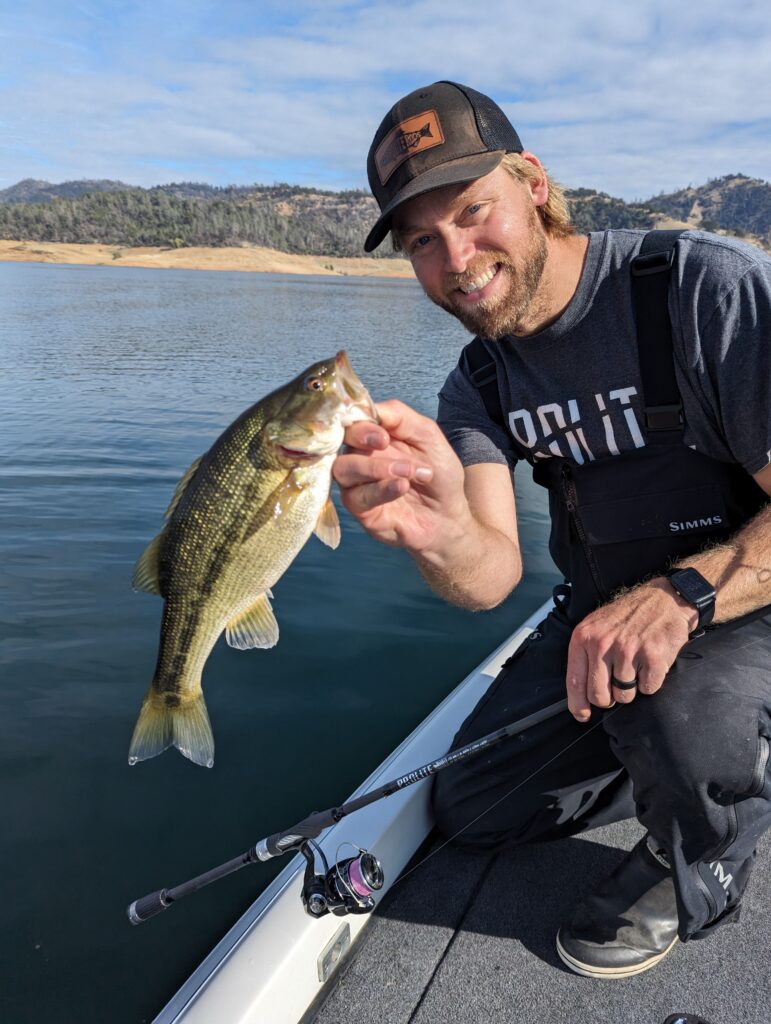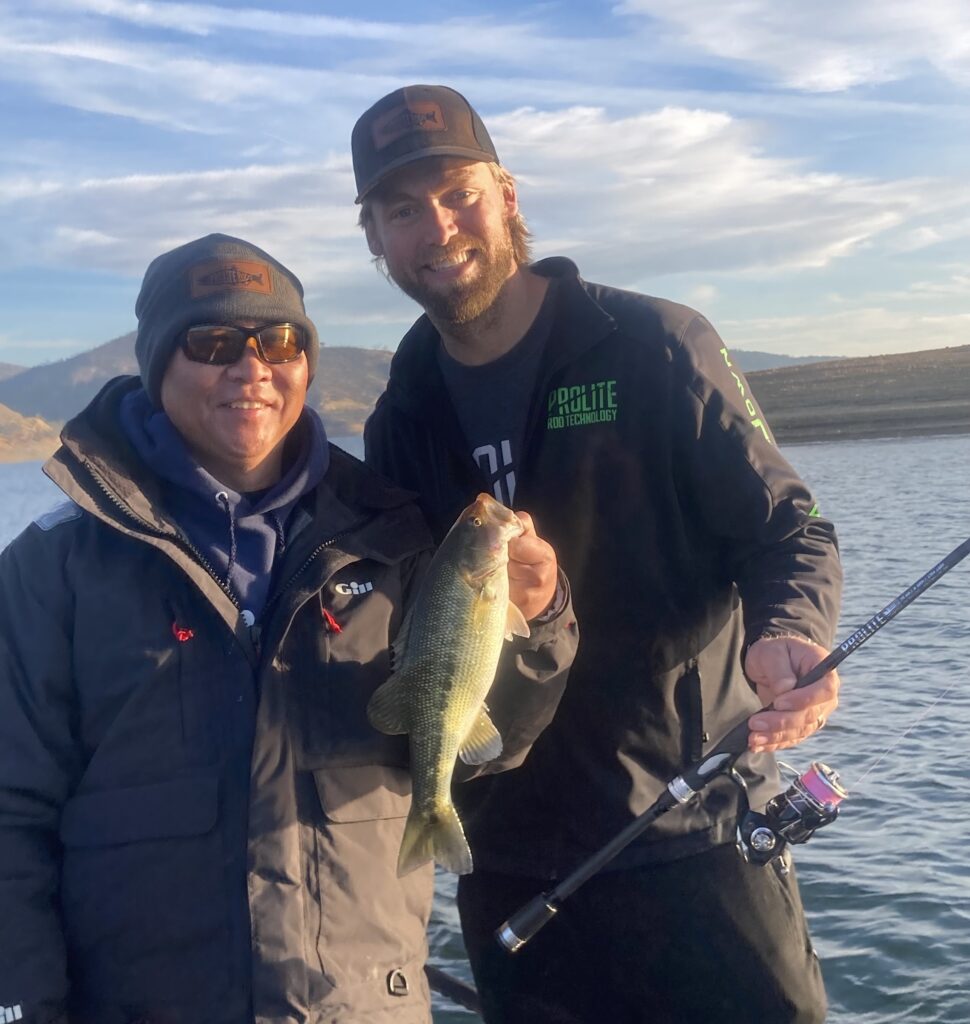New Gear Gets A Go At Lake Oroville
The following appears in the March issue of California Sportsman:

Tumwater, Washington-based rod maker Chris Wegeleben tries out some of his new technology during a winter trip to Lake Oroville. (CHRIS WEGELEBEN/PROLITE RODS)
By Mark Fong
If you are a follower of California Sportsman, you probably know that I love to fish high-quality, functional gear. Whether it be for trout, lingcod or bass, it seems I am always looking to add a rod or two to my arsenal.
Last year, I ordered a few new bass rods from Prolite Rod Technology (360-485-7584; proliterods.com), a small up-and-coming rod company based in Tumwater, Washington. Chris Wegeleben, the owner of Prolite, specializes in building technique- specific rods and he was very interested in hearing my feedback.
Over the course of the season, I had the opportunity to fish my Prolites under a variety of different situations, utilizing many popular light-line applications. During this time, I had many conversations with Chris regarding my thoughts on how the rods were performing.
It did not take long for me to realize that Chris and I shared a lot of the same philosophies and principles regarding rod design and fishability. So much so, in fact, that when I invited him to come down to California to fish, he was all in.

TEST-DRIVING NEW GEAR
Last November, Chris made the 10-plus-hour drive from Tumwater to Northern California. We decided to meet up at Lake Oroville for a day of spotted bass fishing.
Prior to our trip, I prefished the lake several times and the bite, while not wide open, was pretty consistent, making it the perfect environment to field-test rods and compare notes in real time.
I had asked Chris to build me a pair of ultra-finesse spinning rods that I could use for clear, open-water applications. I set up the Prolite SVX72 UL-S and SVX72 L-S with identical 2000-series spinning reels that I spooled up with 5-pound braided line and 4-pound fluorocarbon leaders.
Both rods are built on Batson Rainshadow RX7 blanks with Alps components, and I set up each with a drop-shot rig consisting of a 3/16-ounce tungsten drop-shot weight, No. 2 DS hook and a 4-inch straight-tail worm.
Once we were on the water, I headed to a series of submerged island tops, where I graphed the area with my electronics. I found several spots with good concentrations of pond smelt and fish marks, so I decided to drop the trolling motor and fish through the area.
This was the first time that Chris had used forward-facing sonar technology to hunt bass. During the morning, the bass were in the 20- to 30-foot range and the bite was consistent. Chris and I alternated between the two rods, comparing notes as we went along. Both rods fished very similarly; however, we both agreed that the SVX72 UL-S was a little bit underpowered, but this was to be expected.


SWITCHING IT UP
At midmorning, we ran upriver and switched out the drop shots for a darter head worm, a Ned rig, a small paddletail swimbait and a damiki-style rig. The bite slowed up quite a bit, although our testing observations were pretty consistent from earlier in the morning.
Over the previous few weeks, the bite had been better in the afternoon. With this in mind, I ran back over to the area of the lake that we had fished first thing in the morning. I started graphing around and noticed that the bait had backed out some and was now in 40 to 55 feet of water.
Back to the drop-shot rigs, I started to see more active bass on the forward-facing sonar. Based on what I saw on the graph, Chris and I cast to the target area and it wasn’t long before the fish began to cooperate and the bite became wide open.
On the deeper end of the strike zone, 50 to 55 feet, it became apparent that the SVX72 L-S was better suited to the task at hand, as it resulted in more positive hookups than the SVX72 UL-S. Chris got pretty confident with using the forward-facing sonar, to the extent he started calling his shots.
And before the sun got too low on the horizon, Chris and I also got to fish a new prototype rod he’d brought. When we finally returned to the launch ramp, we were among the last boat trailers left in the lot, bringing an end to a fun and productive day on the water. CS



